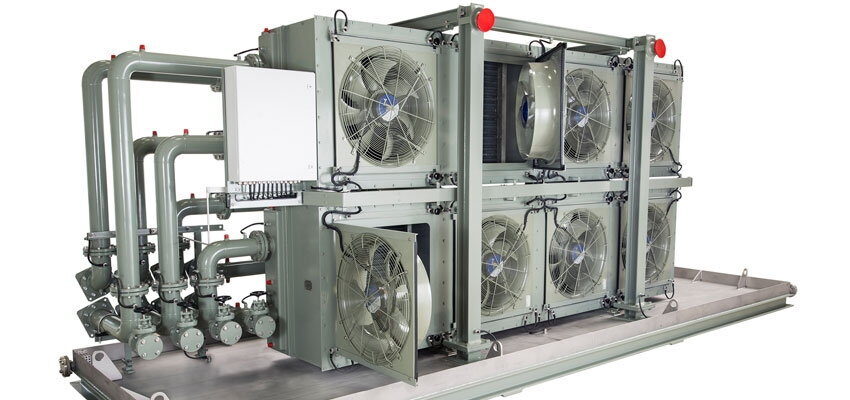
Variable-speed air-forced cooler technology
Variable-speed air-forced cooler technology by Wolfgang SIFFRING
byWolfgang SIFFRING

Abstract
Advanced air coolers are able to cool transformer oil more efficiently than older systems. Replacement or expansion of cooling plants by a new solution can lead to reduction of oil temperatures by several degrees and have a positive influence on the service lifetimes of oil and therefore transformers. Or, conversely, better coolers can – at the same oil temperatures – enhance the maximum performance of a transformer or allow it to operate at a higher average load. The upgrade or expansion of a cooling system in some cases can eliminate the need for immediate investment in a new transformer, or extend the life cycle of existing transformers.
Keywords: component, cooling, upgrade, lifetime, performance
Introduction
Today, many relatively old transformers are being operated at, or beyond, the expected rated performance limits at the time of their design. This is associated with higher load and hence higher average temperature of the transformer oil, which leads to faster deterioration of the oil and solid insulation, meaning the transformer itself. The Montsinger Rule [1] illustrates the key role played by oil cooling in the service life of a transformer: a rise of approximately 8-10 K in oil temperature results in halving the transformer life cycle.
To extend the service life of a transformer, or to upgrade it for higher output requirements, modernization and/or expansion of the oil cooling system has proved effective. Today, forced air oil coolers (AF) offer more cooling capacity on a certain footprint than was the case, for example, 20 years ago. According to comparing calculations of existing old units with the implementation of new, modern fans, an improvement of cooling capacity based on same footprint and noise level of 10 – 15% could be realized. As a result, the replacement or the expansion of an oil-cooling system can lead to more output, less wear, and/or longer system lifetime cycles.
The use of new cooling systems is not only recommended when the existing cooling technology is at the end of its life cycle or defect; the upgrade of cooling systems may also serve for performance enhancement and, in certain cases, can eliminate the immediate need for investments in new and larger transformers. Relevant applications, for example, include power grid sections that – as a result of supply from renewable energy sources – are subject to higher loads than when the transformers were originally planned and designed. Another example is grid sections for which upgrading of turbines and/or generators has led to output increases.
Determination of remaining service lifetime
It is advised to examine a number of criteria before investing in more powerful cooling systems.
1. The first question is whether the transformer, and especially all its insulation materials, are still serviceable for a sufficiently long period of time, and if there are any other current carrying components (bushings, tap changers, leads, etc.) that may limit the increased loading levels.
#component#cooler technology#cooling#Issue 9#Kelvion#power transformer#Transformers Magazine#upgrade#Wolfgang SIFFRING







